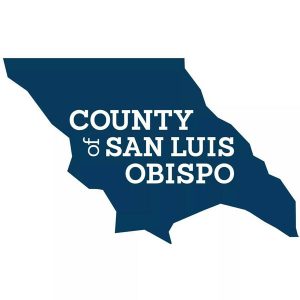COVID-19: SLO County asks community to prepare and take proactive measures

–While there are currently no confirmed cases of COVID-19 in San Luis Obispo County, the County of San Luis Obispo Public Health Department recommends proactive measures be taken now to protect the health of the community. The number of cases of COVID -19 has increased across California, and “it’s only a matter of time before our county has a case as well” says Health Officer Dr. Penny Borenstein in a statement from the county on Monday.
County Public Health recommends local agencies, businesses, school districts, organizations, and health care providers throughout the county to develop or update plans for social distancing, Borenstein said. County Public Health also recommends measures be taken now to help protect people who are at higher risk for severe illness from COVID-19.
Recommended community actions to limit exposure to COVID-19

Dr. Penny Borenstein
Organizations should develop or update plans for social distancing now. Dr. Borenstein urges local organizations to “be ready to respond quickly and effectively to reduce the spread of illness.“ Local agencies, businesses, school districts, organizations, and health care providers throughout the county should develop or update plans for social distancing. Social distancing measures aim to reduce the frequency of contact and increase the physical distance between persons, thereby reducing the risks of person-to-person transmission and slowing the spread of COVID-19.
Social distancing measures include school dismissals, event cancellations, and creating employee policies and plans to work remotely. Most plans do not need to go into effect immediately, but plans should be in place soon and ready to implement as appropriate and based on the scope of a local outbreak. While implementing social distancing measures can cause disruptions in a community, advance planning and preparation can mitigate some of those disruptions.
Event organizers should create an emergency contingency plan for how to modify, cancel, or postpone their mass gathering or large community event if a COVID-19 outbreak occurs in the community. Event organizers should refer to the Mass Gatherings Guidance on Novel Coronavirus or COVID-19 from the California Department of Public Health. County Public Health is using this flexible state guidance for determining when large public gatherings or events may present a public health risk. We do not have more specific thresholds and will react in real-time based on the latest data, which is rapidly changing.
Long term care facilities should review infection control procedures and update their plans for protecting their medically fragile residents from interaction with those from the outside who may bring infectious diseases into the facility. See Strategies to Prevent the Spread of COVID-19 in Long-Term Care Facilities.
Businesses should review their staffing and identify workers who could work from home. This results in fewer people and less contact between people at the workplace. Employees should speak with their employers about whether they can still fulfill the responsibilities of their jobs while working from home. See Resources for Businesses and Employers.
Schools and childcare facilities should have plans in place and communicate with parents about possible temporary closures. See Resources for K-12 Schools and Childcare Programs.
Primary care medical groups should consider implementing plans to communicate with patients remotely. See Information for Healthcare Professionals.
Gatherings such as regular religious services should consider live-streaming their service so that congregants can view the service from home, or they may consider modifying their service so that there can be at least two spaces between each congregant. See Resources for Community- and Faith-Based Leaders.
Dr. Borenstein has experience guiding communities through outbreaks and pandemics and has found a “measured and flexible approach” to be most successful.
Recommendations from the San Luis Obispo County Public Health Department:
People at higher risk should prepare for COVID-19 now
This includes people who are aged 60 and over and those who have serious chronic health conditions, like diabetes, heart disease, lung disease, and weakened immune systems. People should talk to their health care provider if they are not sure if they are at higher risk. Once COVID-19 is spreading in the community, people at higher risk should take extra measures to put distance between themselves and other people.
Stay home as much as possible
- Avoid close contact with people who appear sick.
- Consider ways of getting food brought to your house through family, social, or commercial networks
- Have supplies on hand of medications. Contact your healthcare provider to ask about obtaining extra necessary medications to have on hand in case there is an outbreak of COVID-19 in your community and you need to stay home for a prolonged period of time. Consider using mail-order for medications.
Take everyday precautions
- Clean your hands often. Wash your hands often with soap and water for at least 20 seconds, especially after blowing your nose, coughing, or sneezing, or having been in a public place. If soap and water are not available, use a hand sanitizer that contains at least 60% alcohol.
- To the extent possible, avoid touching high-touch surfaces in public places – elevator buttons, door handles, handrails, handshaking with people, etc. Use a tissue or your sleeve to cover your hand or finger if you must touch something.
- Wash your hands after touching surfaces in public places.
- Avoid touching your face, nose, eyes, etc.
- Avoid crowds, especially in poorly ventilated spaces. Your risk of exposure to respiratory viruses like COVID-19 may increase in crowded, closed-in settings with little air circulation if there are people in the crowd who are sick.
Have a plan for if you get sick
- Consult with your health care provider for more information about monitoring your health for symptoms suggestive of COVID-19.
- Stay in touch with others by phone or email.
- Determine who can provide you with care if your caregiver gets sick
The public should take precautions now
- Stay informed and get your information from credible sources. Visit www.ReadySLO.org for the latest news from County Public Health, coronavirus FAQs, and up-to-date information from the CDC.
- Try to stay calm. While this new disease is of concern to everyone and especially older persons and those who suffer from certain chronic diseases, there is no need for panic. We are not recommending the use of masks; there is no need to stockpile household goods beyond the usual recommendation of a three-day supply for any type of emergency; and we are not recommending cancellation of school or any events at this time.
- Do not go to the emergency room unless you are sick enough to need immediate health care. Hospitals are experiencing high volumes of patients currently due to ongoing flu illness in addition to persons concerned about COVID-19. This patient surge impedes our hospitals ability to provide urgent care for persons affected by trauma, heart attacks, strokes and other emergency conditions.
- Stay healthy. Take everyday precautions to help prevent the spread of respiratory viruses, like the flu and COVID-19:
- Get your flu shot to protect against flu, which can produce symptoms similar to novel coronavirus.
- Wash your hands often with soap and water for at least 20 seconds. If soap and water are not available, use an alcohol-based hand sanitizer. o Avoid touching your eyes, nose, and mouth with unwashed hands.
- Cover your cough or sneeze with a tissue or in your elbow.
- Clean and disinfect frequently touched objects and surfaces. o Avoid close contact with people who are sick.
- Stay home when you are sick and avoid contact with others. o If you’re sick with a contagious illness, call your health care provider or clinic before you arrive. They will provide you with special arrival instructions to avoid infecting others. o Don’t go to the emergency room unless you have a medical emergency. o Think twice about travel to other countries where community spread is present. See CDC travel advisories.
County Public Health says the public plays an important role in how we get through this. Dr. Borenstein adds, “While concern, precaution, and preparedness are good for us, panic is not. We need to all work together to keep our community safe and healthy.”











